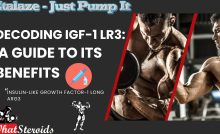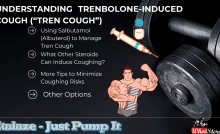Calisthenics: Secret to Building A Better Upper and Middle Body


Calisthenics exercises involve using your body weight as resistance to build muscle and strength. These workouts are an effective way to develop lean muscle mass and improve overall fitness. The exercises can include push-ups, pull-ups, squats, and planks, which target different muscle groups. By consistently incorporating calisthenics into your fitness routine, you can achieve muscle growth and improved definition. This can be further enhanced by pairing your workouts with a proper diet and gradually increasing the difficulty of exercises through progressive overload.
Calisthenics exercises are suitable for people of all fitness levels and ages, intending to improve strength, flexibility, and endurance. Basic movements are recommended for beginners, while more advanced practitioners can engage in complex routines. It is vital to adjust the exercises to your fitness level and seek advice from a healthcare professional if you have any underlying medical conditions or concerns before starting a calisthenics program.
What Gains One Expect from Calisthenics
Calisthenics can be valuable in bodybuilding for several reasons:
Muscular Endurance
Calisthenics exercises like push-ups, pull-ups, and dips build muscular endurance, which complements the strength gained through weightlifting.
Functional Strength
Calisthenics focuses on compound movements that mimic real-life activities, promoting functional strength and balanced muscle development.
Body Control
Calisthenics improves body control, balance, and coordination, enhancing your overall physique and performance.
Variety
Incorporating calisthenics into your routine can provide variety, helping prevent plateaus and boredom in your training.
Minimal Equipment
Calisthenics often require minimal or no equipment, making it accessible and cost-effective for bodybuilders.
Lean Muscle Mass
Calisthenics can help promote the development of lean muscle mass and a more aesthetic, sculpted physique.
Injury Prevention
Calisthenics can help improve joint stability and flexibility, potentially reducing the risk of injury in weightlifting.
Core Strength
Many calisthenics exercises engage the core, contributing to a strong midsection, which is important in bodybuilding.
Related Article: Top 10 Erection Gels & Creams for Him
While calisthenics can be a valuable addition to a bodybuilding routine, it's essential to find the right balance between weightlifting and bodyweight exercises to achieve your specific fitness goal.
Various Calisthenics Exercises to Try
As mentioned, calisthenics is a form of exercise that uses your body weight for resistance. There are many types of calisthenics exercises, and I can give you a brief overview of some of the common ones along with basic instructions on how to perform them:
-
Push-Ups:
- Start in a plank position with your hands shoulder-width apart.
- Lower your body until your chest nearly touches the ground.
- Push back up to the starting position.
-
Pull-Ups:
- Find a horizontal bar or pull-up bar.
- Hang from the bar with your palms facing away from you.
- Pull your body up until your chin is above the bar.
-
Squats:
- Stand with your feet shoulder-width apart.
- Bend your knees and lower your body, keeping your back straight.
- Return to the starting position.
-
Lunges:
- Stand with one foot forward and one foot back.
- Bend both knees to lower your body, keeping your front knee over your ankle.
- Return to the starting position and switch legs.
-
Planks:
- Get into a push-up position with your forearms on the ground.
- Keep your body straight from head to heels, and hold this position.
- Mountain Climbers:
- Start in a push-up position.
- Alternately, draw your knees toward your chest, as if you're "running" in place.
-
Dips:
- Find parallel bars or use the edge of a sturdy surface.
- Lower your body by bending your elbows, then push back up.
- Bicycle Crunches:
- Lie on your back with your hands behind your head.
- Lift your shoulders off the ground and bring one knee to the opposite elbow, alternating sides.
-
Burpees:
- Begin in a standing position.
- Drop into a squat position and place your hands on the ground.
- Kick your feet back into a plank position, then quickly return to the squat position.
- Jump up from the squat position.
- Handstand Push-Ups
-
- Find a wall for support and kick up into a handstand position.
- Lower your body by bending your arms, then push back up.
These are just a few examples of calisthenics exercises. It's important to start with proper form, progress gradually, and adapt the exercises to your fitness level. If you're new to calisthenics, consider consulting a fitness professional to ensure you perform the exercises correctly and safely.
Common Injuries and Prevention
Common injuries during calisthenics can include:
- Muscle Strains: These occur when you push your muscles beyond their capacity. To avoid them, warm up properly and gradually increase intensity.
- Tendonitis: Overuse of tendons can lead to inflammation and pain. To prevent this, focus on proper form and don't overtrain.
- Joint Injuries: Wrists, shoulders, and elbows can be susceptible to overuse injuries. Ensure proper form, strengthen supporting muscles, and give your joints adequate rest.
- Lower Back Pain: Poor form during exercises like the hollow body hold or leg raises can strain your lower back. Maintain a neutral spine and strengthen your core.
- Hand and Wrist Injuries: Grip-related injuries can happen during exercises like pull-ups. Use proper grips, consider grip-strengthening exercises, and use wrist supports if needed.
- Overtraining: Overtraining can lead to various injuries and burnout. Follow a structured workout plan, allow for sufficient rest, and listen to your body.
- Ligament Sprains: These can occur during movements like muscle-ups. Work on gradual progressions and techniques to prevent sudden stress on ligaments.
- Lack of Flexibility: Insufficient flexibility can lead to strains and injuries. Incorporate regular stretching and mobility exercises.
To avoid these injuries, it's crucial to prioritize proper form, progress gradually, incorporate rest and recovery days, and include flexibility and mobility work in your training routine. Additionally, consult with a fitness professional or physical therapist for guidance on your specific needs and limitations.
Important Read: 15 Bulking Supplements Today
Best Foods Before Calisthenics
Before calisthenics exercises, it's essential to consume foods that provide energy and support muscle function. Consider options like:
- Complex carbohydrates (e.g., whole grains, oatmeal) for sustained energy.
- Lean protein sources (e.g., chicken, tofu) to aid in muscle recovery.
- Fruits or vegetables for vitamins, minerals, and hydration.
- Healthy fats (e.g., nuts, avocados) in moderation for sustained energy.
Remember to eat a balanced meal a couple of hours before your workout to allow for digestion. Stay hydrated and avoid heavy, greasy, or high-fiber foods before exercising.
Recovery After Calisthenics
The best recovery process after calisthenics exercises typically includes the following:
Cool Down: Spend a few minutes doing light, low-intensity exercises like jogging in place or walking to gradually lower your heart rate and reduce muscle tension.
Stretching: Perform static stretches for the major muscle groups you worked on during your calisthenics routine. Hold each stretch for 15-30 seconds to improve flexibility and reduce the risk of muscle soreness.
Hydration: Rehydrate by drinking water to replace fluids lost through sweat during your workout.
Nutrition: Consume a balanced meal or snack that includes carbohydrates, proteins, and healthy fats within a few hours after your workout to help with muscle recovery.
Rest: Ensure you sleep enough to allow your body to recover and repair. Aim for 7-9 hours of quality sleep per night.
Active Recovery: Engage in low-impact activities like walking or swimming on rest days to promote blood flow and reduce muscle soreness.
Foam Rolling: Consider using a foam roller to perform self-myofascial release, which can help alleviate muscle tension and soreness.
Listen to Your Body: Pay attention to any signs of overtraining, pain, or discomfort. If needed, take extra rest days to allow your body to recover fully.
Remember that the specific recovery process may vary depending on your fitness level and the intensity of your calisthenics workout. It's essential to tailor your recovery routine to your individual needs and goals.
Alternatives to Calisthenics Exercises
There are many alternative exercises to calisthenics. Some options include:
- Weightlifting: Incorporate free weights or machines for strength training.
- Cardiovascular exercises: Activities like running, cycling, swimming, or dancing for aerobic fitness.
- Yoga: For flexibility, balance, and stress relief.
- Pilates: Focuses on core strength and flexibility.
- CrossFit: A high-intensity workout combining various exercises.
- Martial arts: Such as karate, judo, or kickboxing for self-defense and fitness.
- Resistance bands: Use bands to add resistance to your exercises.
- TRX training: Utilizes suspension straps for bodyweight exercises.
- Kettlebell training: Incorporate kettlebells for strength and conditioning.
- Circuit training: A mix of strength and aerobic exercises in a timed sequence.
Choose exercises that suit your fitness goals and preferences. Always consult a fitness professional if unsure which exercises are right for you.
Get Yourself A Good Coach to Help With Calisthenics
Finding a good coach for calisthenics exercises involves several steps:
Must Read: New Arrival Workout Equipment on Amazon for The Disabled
Research
Start by researching calisthenics coaches in your area. You can use search engines, social media, or fitness forums to find recommendations.
Credentials
Look for coaches who have relevant certifications, such as personal training or calisthenics coaching certifications. This indicates they have a certain level of expertise.
Experience
Check the coach's experience in calisthenics. A coach with a solid background in this field will more likely provide effective guidance.
Client Testimonials
Read reviews or ask for testimonials from previous clients. This can give you insight into their coaching style and the results they've helped others achieve.
Free Sessions or Consultations
Many coaches offer free initial consultations or trial sessions. Take advantage of these opportunities to get a feel for the coach's teaching style and how well you connect with them.
Compatibility
Ensure the coach's teaching approach aligns with your goals and preferences. Some coaches focus on specific aspects of calisthenics, so make sure they match your objectives.
Availability
Consider their availability and scheduling. Make sure their sessions fit into your daily or weekly routine.
Cost
Understand the coach's pricing structure and see if it fits your budget. While quality coaching is an investment, it should be affordable for you.
Communication
Effective communication with your coach is crucial. Ensure you can easily discuss your progress, goals, and concerns with them.
Progress Tracking
A good coach should have a system for tracking your progress and making necessary adjustments to your training plan.
Customization
Look for a coach who can tailor a calisthenics program to your needs and fitness level.
Motivation
A great coach should motivate and inspire you to achieve your fitness goals.
Location
Consider whether you prefer in-person coaching or are open to online coaching, which can provide access to coaches outside your local area.
Background Check
If you have any concerns, don't hesitate to check the coach's background and credentials thoroughly.
Remember that finding the right coach is a personal process, and it may take some time to find someone who aligns with your needs and goals. Don't rush the decision, and feel free to interview or consult with multiple coaches before making your choice.
Overall
To conclude, professional bodybuilders need to integrate calisthenics thoughtfully into their training, focusing on exercises that complement their goals and existing routines. Consulting with a fitness professional can help create a customized plan.
Recent Posts
Decoding IGF-1 LR3: A Guide to its Benefits
IGF-1 LR3 (Insulin-like Growth Factor-1 Long Arg3) is a synthetic variant of IGF-1, a hormone…
AOD-9604: The Fat-Burning Peptide Explained
AOD-9604, along with the similar HGH Frag 176-191, is a peptide derived from Growth Hormone…
Understanding Trenbolone-Induced Cough (“Tren Cough”)
Trenbolone, a potent anabolic steroid, can sometimes cause “tren cough”—a sudden and intense coughing episode…
Creatine vs Myostatin: An Expert’s Analysis
Myostatin, a protein encoded by the MSTN gene, acts as a regulator of muscle growth.…
Raloxifene (Evista) 101: A Non-Surgical Solution for Gyno
Raloxifene, a selective estrogen receptor modulator (SERM), is one of the most valuable yet less…
Mastering Bodybuilding in 2025: Top Fitness Tips for Success
Bodybuilding is more than just a sport; it's a lifestyle that requires dedication, discipline, and…



